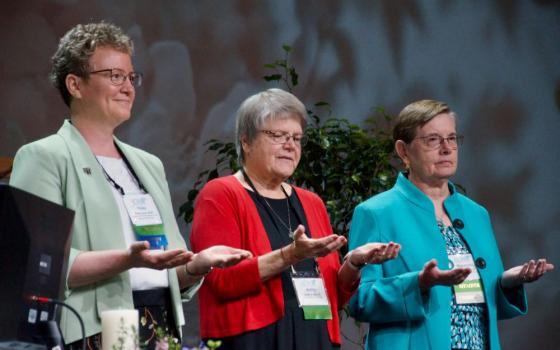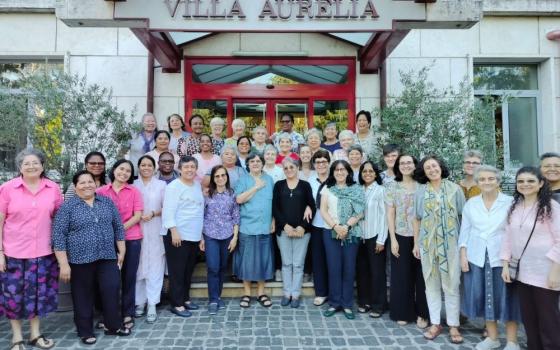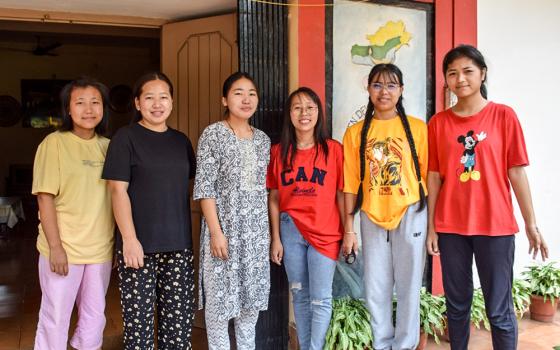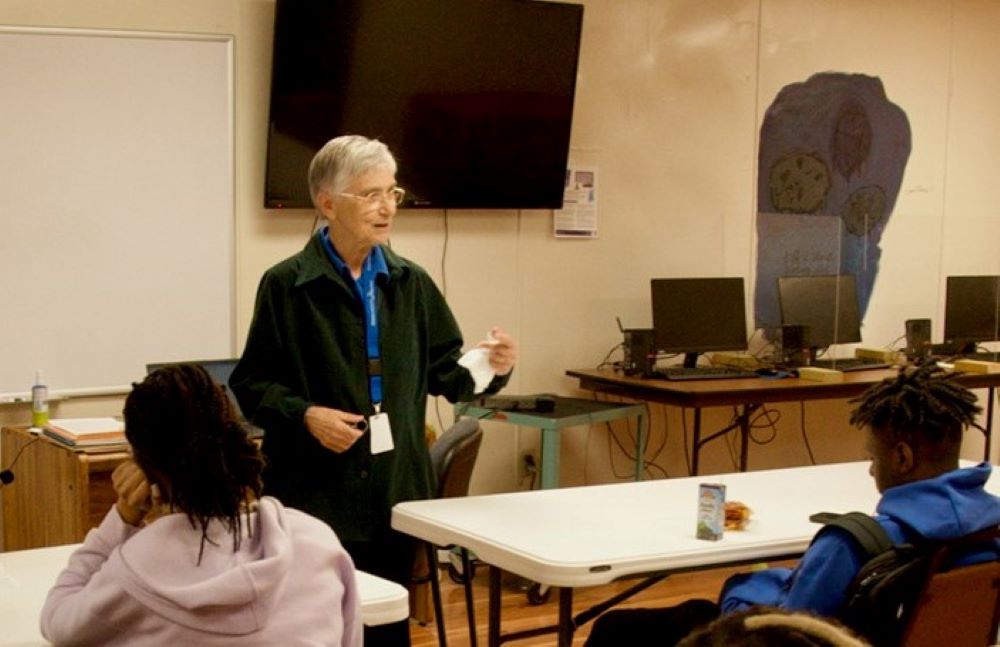
Sr. Kathleen Navarra speaks to students in an afterschool program at the Edmundite Missions on March 15, 2023, in Selma, Alabama. (GSR photo/Dan Stockman)
As Sr. Kathleen Navarra walks through the nutrition center at Edmundite Missions, greeting children eating their after-school snacks, she sees a boy working on an elaborate superhero drawing.
"Do you have more like this?" she asks, and when he says "yes," the Sister of St. Joseph of Rochester, New York, asks if he'd be willing to include them in an upcoming art show a friend is organizing.
"You could be a professional artist," she tells him. He seems unsure that his hobby could somehow become a career.
Things like careers can be difficult to imagine in Selma, Alabama: Only 13% of high school students test at or above state proficiency standards for reading and only 7% for math, according to U.S. News & World Report. Selma is the poorest city in the state and one of the poorest cities in the nation, and 36% of its less than 18,000 residents live below the poverty line.
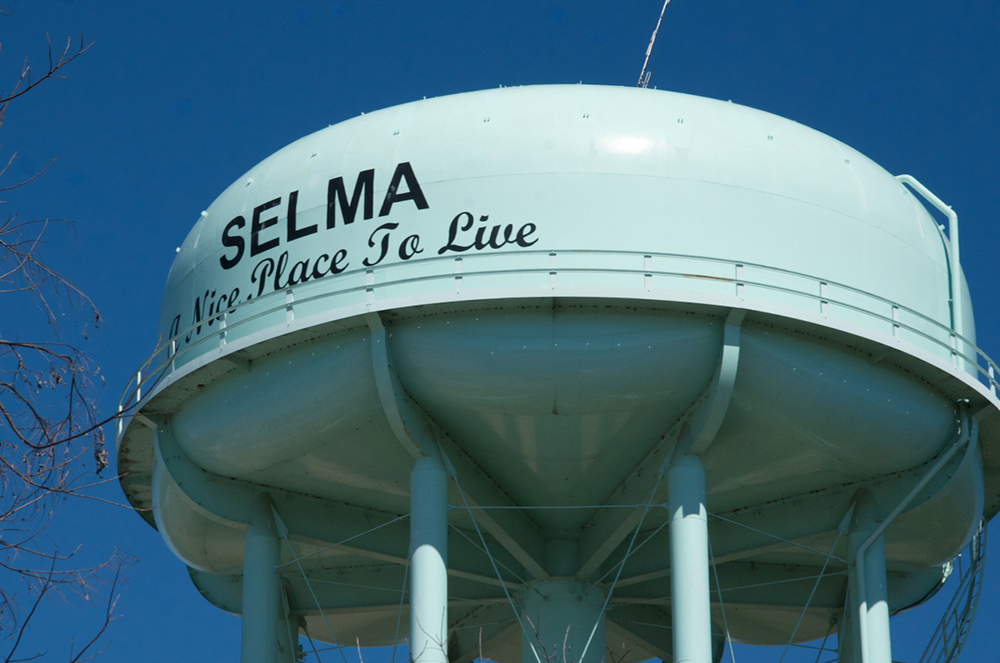
A water tower looms over the Edmundite Missions on March 15 in Selma, Alabama. Selma is the poorest city in one of the poorest states in the nation. (GSR photo/Dan Stockman)
That's where the sisters come in.
Edmundite priests arrived in Selma in 1937 and were stunned by the region's level of poverty and shocking living conditions. They've been ministering there ever since, and for much of that time, women religious have assisted them. Currently, there are four sisters there: Navarra; Sr. Pat Flass, also a Sister of St. Joseph of Rochester; and Sr. Mary Agnes Cashman and Sr. Virginia Patrick, both from the Congregation of Divine Providence in Kentucky.
The Edmundite Missions serve 1,300 meals a day in the nutrition center and deliver another 600 to those who are homebound, and in three rural areas, the group provides bags of food to 1,000 people each month. The mission also provides programming for seniors, youth and workforce development. In addition to the after-school program in Selma, there are three others in the rural areas of Mosses, Vredenburgh and Pine Apple.
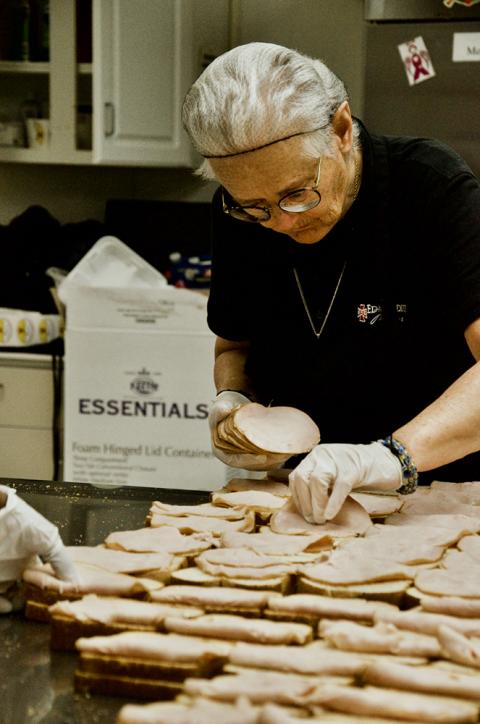
Sr. Virginia Patrick makes sandwiches in the nutrition center of the Edmundite Missions on March 15 in Selma, Alabama. (GSR photo/Dan Stockman)
"Since the early 1940s, sisters have played a pivotal role in the work of the Missions," Chad McEachern, president and CEO of Edmundite Missions, wrote in an email to Global Sisters Report. "From teaching to nursing to community development, sisters have been visible and active representatives of our Catholicity through their work."
Flass said St. Joseph sisters from Rochester were the first sisters to work at the Edmundite Missions, arriving in Selma in 1940. Starting in 2019, the Conrad N. Hilton Foundation and the Edmundites ran a program to bring sisters to the rural South to expand their knowledge of the people and their needs. (The Hilton Foundation is the primary funder of Global Sisters Report.) Flass ran the program, and Cashman was the first of 15 women religious to arrive.
The program ended in 2022, but these four sisters have stayed on, ministering just as sisters have for more than 80 years in the region.
"A lot of sisters have gone through Selma," Patrick said.
McEachern said the sisters have made a dramatic impact on the region.
"When we unveiled our Legacy Wall last week, it was amazing to hear the sisters reflect on the photographs and reminisce on the difference they had made in so many lives," he said in the email. "We are blessed that the sisters continue to change lives today as they have over the decades."
Flass arrived in Alabama in 1998, first ministering in Pine Apple, then in Vredenburgh. She came to Selma in 2013.
"There's a lot of poverty in the South," Flass said.
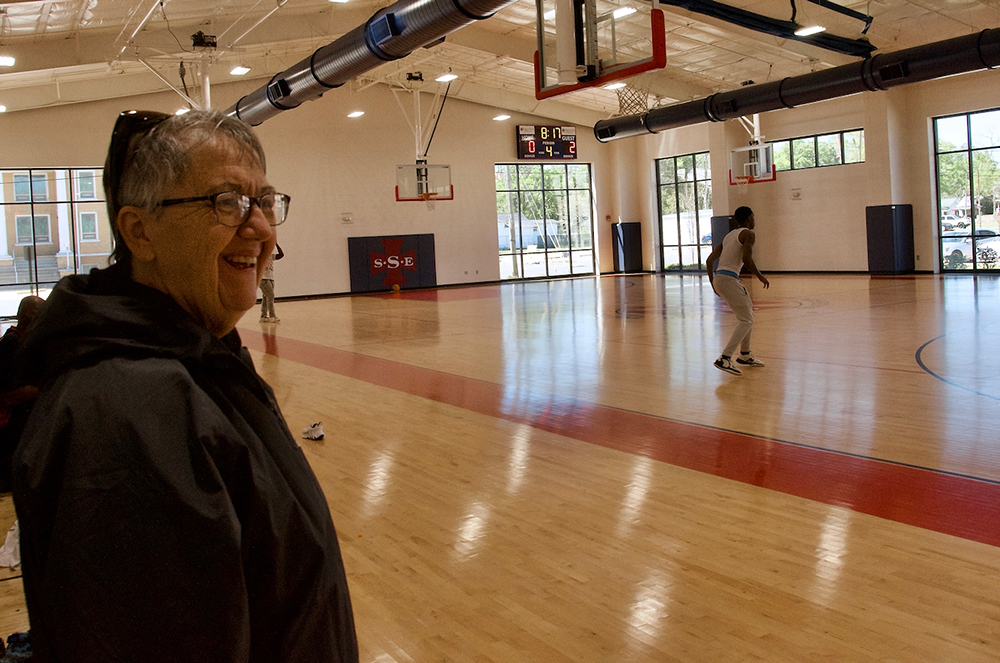
Sr. Mary Agnes Cashman watches young men play basketball in the Edmundite Missions recreation center March 15 in Selma, Alabama. She said many people in the community don't know about the services available at the missions; the recreation center lets staff and volunteers build relationships so they can learn about and benefit from those services. (GSR photo/Dan Stockman)
Selma is an extreme example: Decade after decade, the city has gotten smaller, especially since Craig Air Force Base closed in 1977. From 2000 to 2010, the population grew by .2%, but that was an anomaly: AL.com reports that since the civil rights marches in Selma in 1965, the city has lost 58% of its population.
In March, Selma experienced the highest unemployment rate in the state (5.3%), more than double the rate in Mobile and Montgomery, and this is nothing new — the city has suffered economically for decades. Some industry has moved into the former air base, bringing good jobs, but it is 5 miles outside of town, and those who need the jobs most have no transportation to get there.
As if things weren't bad enough in Selma, on Jan. 12, a tornado hit the town, destroying more than 600 buildings, including roughly half the city's residential neighborhoods, AL.com reported.
Navarra said many of those houses will not be rebuilt because they were shabby rentals with rents so low the owners have no financial incentive to invest in them. Many of those residents are staying in hotels paid for by the Federal Emergency Management Agency, but no one knows where they'll go when that funding runs out. (FEMA's rental assistance generally lasts for up to 18 months.) Even before the tornado, there were hundreds of dilapidated and neglected properties in the city.
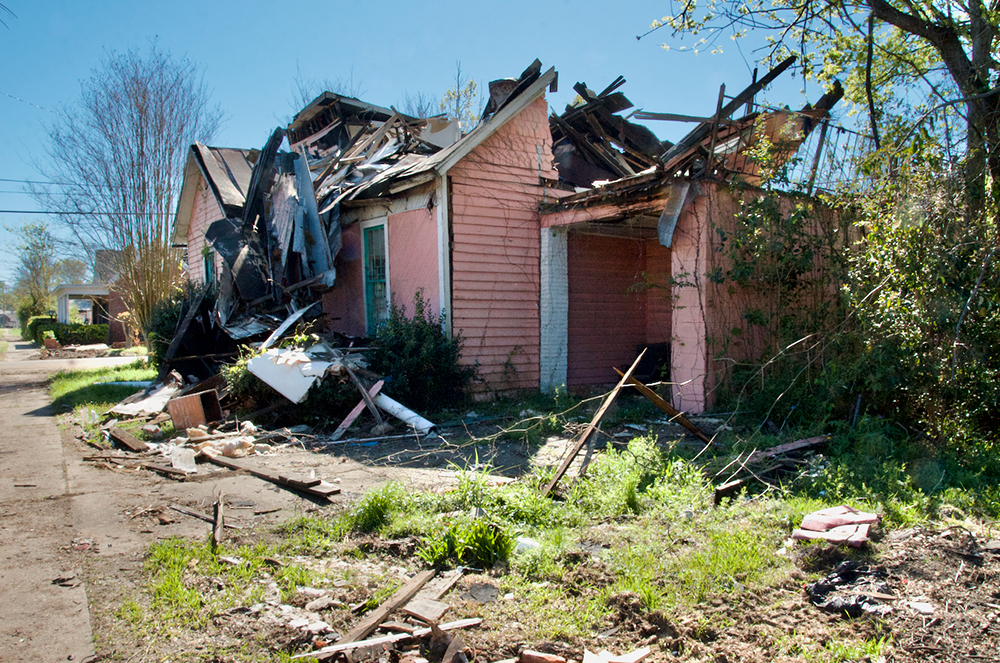
A Jan. 12 tornado wrecked half the residential neighborhoods in Selma, Alabama. Neighborhoods were still filled with rubble in March. (GSR photo/Dan Stockman)
Crime has long been a problem: The crime rate is at times triple the national average for both violent and property crimes. Between Jan. 1 and April 30, there were 11 homicides in Selma.
But the sisters seem to be protected.
"The people know the sisters. They trust the sisters," Flass said. "I have never felt unsafe a day I've been here."
That may be because of another connection between the missions and Catholic sisters: Edmundite Missions founder Fr. Francis Casey asked that a monastery be located nearby, and the Discalced Carmelite Nuns moved from Philadelphia to Mobile.
Advertisement
The Carmelites were summoned "for the purpose of praying for the success of the Missions and those served through its ministry," McEachern wrote. "This linkage between the Missions and the Carmelite Sisters remains to this very day."
Cashman recites the long list of educational programming they offer for children but notes that they need more than academics.
"All these kids, if we sit with them, that's all they want," she said. "That one-on-one attention."

